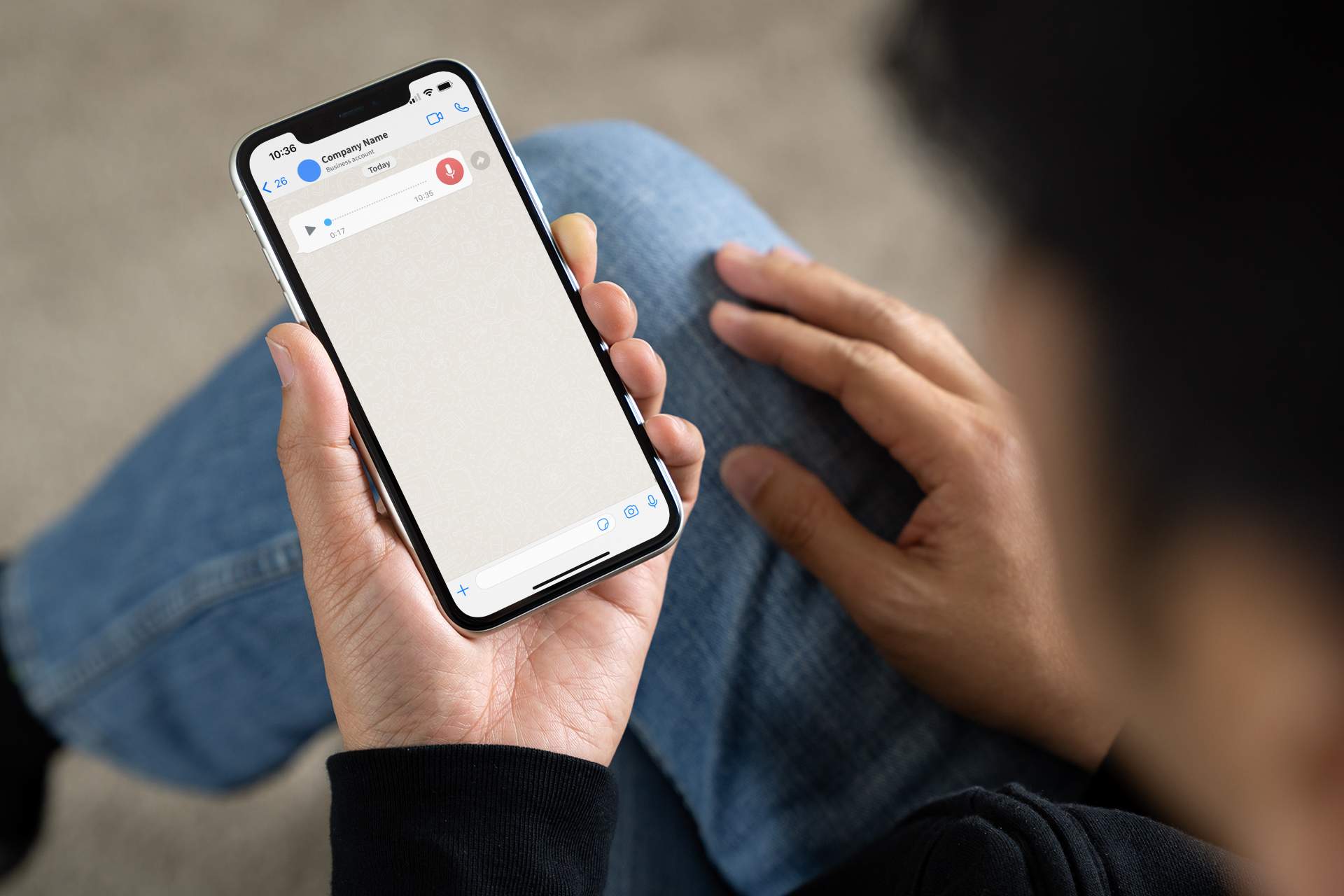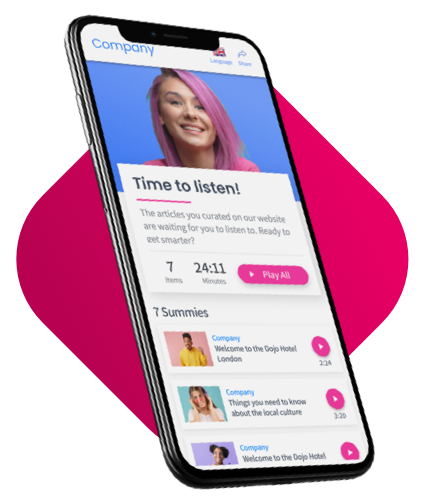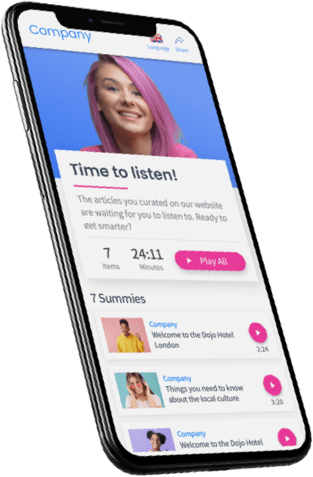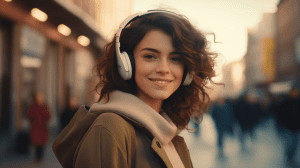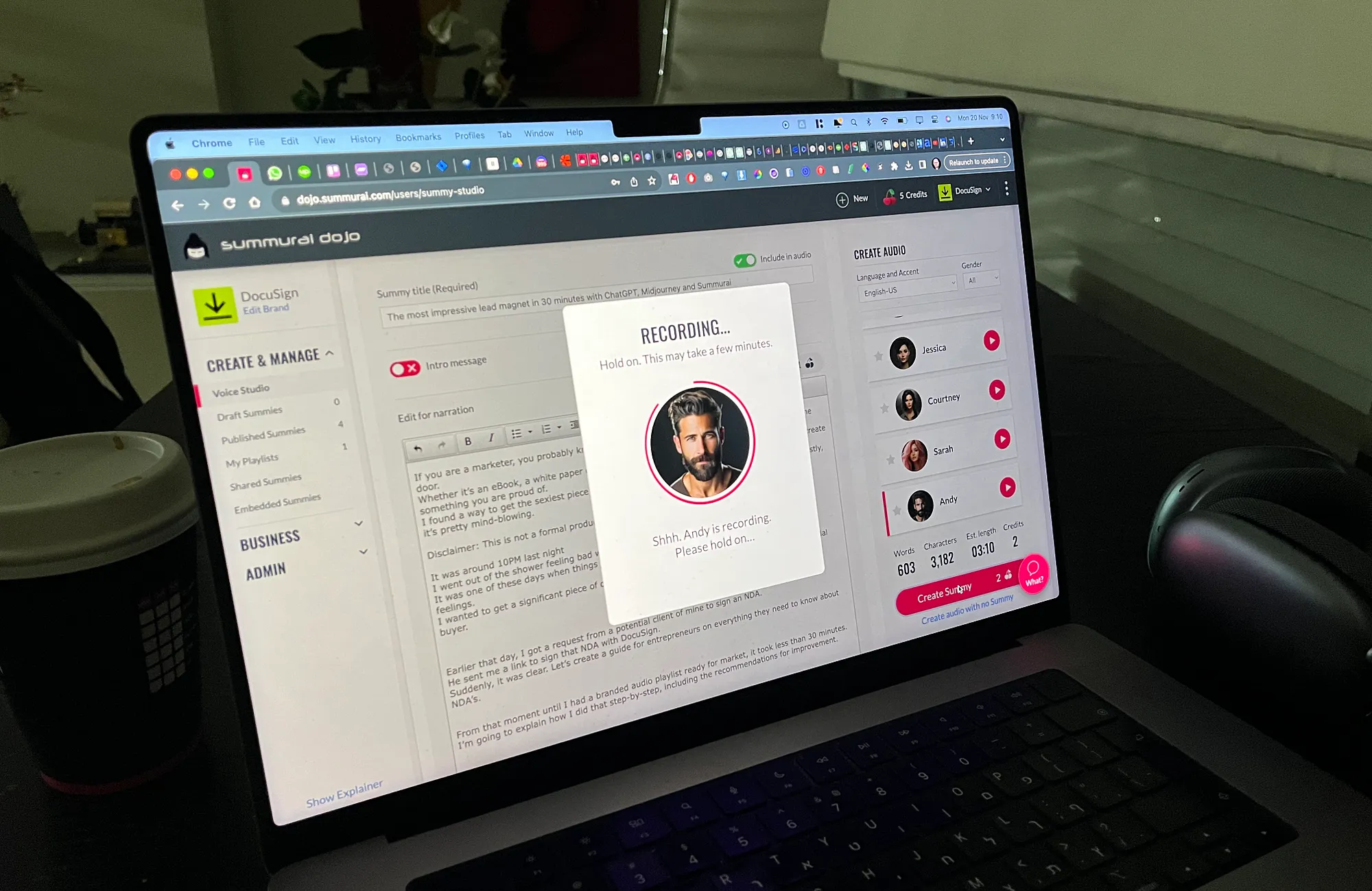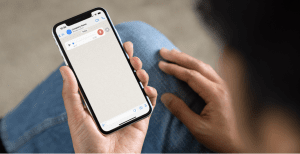How to send voice messages on WhatsApp without annoying your customers
Why do we hate receiving WhatsApp voice messages, how do you make WhatsApp voice messages super effective and how you can use them in your marketing communications and customer journeys?

Let’s start with the bad part
If you connected with the statement in the title and you also hate receiving voice messages on WhatsApp, it’s a sign that you’re not that young anymore. Just like me, you too were born in a generation that was raised on the purity of reading and that was hardly exposed to audio content. How do I know that? Because when you ask teenagers or younger kids, you’ll find that they don’t hate receiving voice messages at all and that in most cases – it’s their preferred way of communication compared to texts (emojis are a nice compromise in the middle).
You grew up in an era of written content
I was born in 1978 and throughout all the years I was brought up – in elementary school, high school, during my academic studies and at work – there was always a clear expectation around me to read. Our education was based entirely on the consumption and creation of content in written format, while audio content was not at all on the agenda.
This has many expressions that we hardly notice. The first expression is that by default – we choose to write and articulate, while the younger generation will often choose to record a voice message, simply to save the need to write and articulate.
So, what’s actually so annoying in voice messages?
Although I don’t always enjoy reading, and in most cases I am “forced” to read out of lack of choice, when someone sends me a voice message on WhatsApp, my first tendency is to get angry. For me, leaving a voice message on WhatsApp is seen as an egotistical and inconsiderate act. The other person chose the most convenient way for him, recorded voice message and placed it in my lot, a bit like placing a box in my living room and demanding that I spend time opening it without telling me what’s in it and why I should invest the time and effort to open it. This is an act that does not respect my time.
This feeling indicates, among other things, a generation gap. When my 15-year-old daughter’s friends send her a voice message, and she replies with a voice message of her own – no one thinks it’s an inconsiderate act. On the contrary. They are happy that they were spared the need to formulate the text on the sending side and invest cognitive reading resources on the receiving side. They optimize their cognitive efforts and they couldn’t care less about the importance of reading.
How can you make audio content on WhatsApp get positive feedback from everyone?
There is one principle that makes the difference called “Meta Data”. If you pack your voice message in an envelope of information, the voice message will become the preferred choice for the reading generation as well.
When you receive a letter in the snail-mail, before you are required to open it and read – you usually already know what it is about. How? Thanks to the envelope and the name of the sender. The same way, if our voice message is wrapped with a title that explains what awaits you inside, along with the time required to listen, and you know what’s in it for you before pressing the play button, you can decide if the voice message is worth the attention it requires. In this way the choice to listen will turn from a compulsion to a choice of comfort.
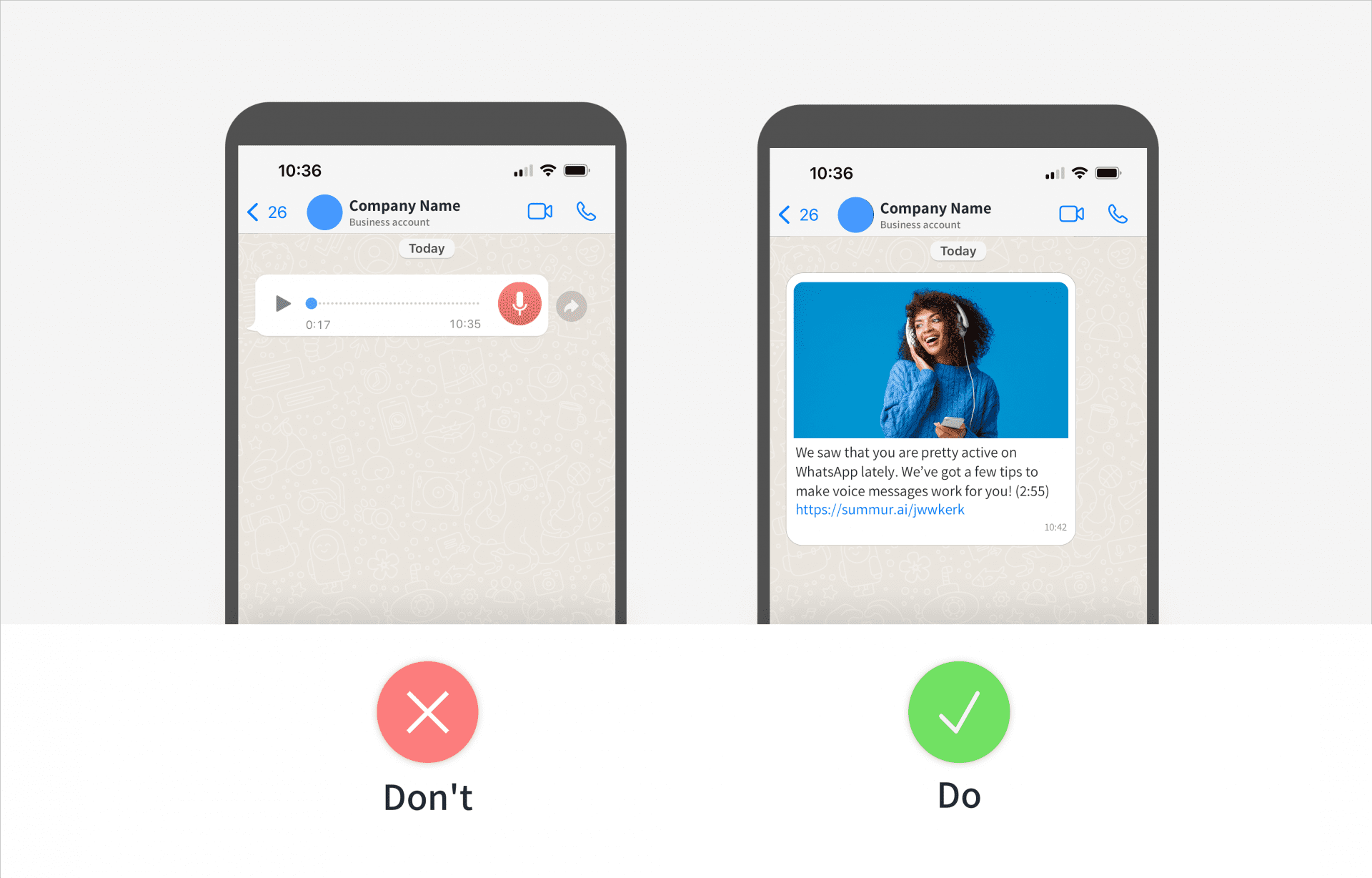
What if I’m not comfortable listening?
In many situations – it is simply more convenient to read. If you are in the middle of a meeting, children fallen asleep, or your WhatsApp voice messages isn’t connecting to your car’s speakerphone for some reason, better to have an alternative to read (not while driving, God forbid!). In the end – it is important to let our audience choose how to consume the content instead of imposing one model.
The world is changing and so are you
Without noticing, the audio content revolution, led by the podcasts around us, is taking over us all. If three-four years ago most of the population did not know what podcasts were, then in recent years podcasts have reached the mainstream and penetrated every segment and every age of the population. Everyone learns to listen.
When Generation X or those older than it are exposed to audio content, the initial feeling is that it is strange, unfamiliar and different, but when you start to get used to it, you realize that audio content has a lot of advantages, first of all the ability to consume it without devoting full attention and during another primary activity. Unlike reading, which requires you to stop everything and devote yourself to it, the audio content opens a world of opportunities to acquire knowledge and be updated as a secondary activity.
How can companies take advantage of this opportunity?
At every opportunity to enrich your target audience, provide added value, send instructions or explanations – you should ask whether the demand from the target audience to stop everything and read would not be an excessive demand. In most cases, our users and customers do not read anything… Accurate voice content, sent to them in a WhatsApp message at the right time and in the right place – may turn out to be the most effective content you’ve ever encountered.
Five practical tips that will make a difference in the results:
- Make sure that the audio content message is wrapped with the correct Meta data – a title that will explain what it is about and a length indication to show how long it will require to consume it.
- The shorter the content, the more likely we will agree to devote ourselves to it.
- Make sure to allow the voice content interface to be comfortable and friendly, and don’t settle for a small audio player integrated into your blog.
- Take care of a written alternative, which will still allow you to read the content, in case your target audience does not feel comfortable listening (or cannot, due to accessibility considerations).
- At the end of the content – take the opportunity to add an action-motivating message, and reinforce it with a visual action-motivation button, to continue the customer’s journey after listening and direct the listeners to the place where you want the customers to continue.
Need a branded audio player to support your audio content?
It’s time to turn your content into audio and make it easier to get your message.
With Summurai’s platform you’ll be able to set your branded web-based audio player in minutes, get your audio content with some outstanding text-to-speech, with your own voice or with our team of professional narrators, add your call-to-action and track what’s working for you.
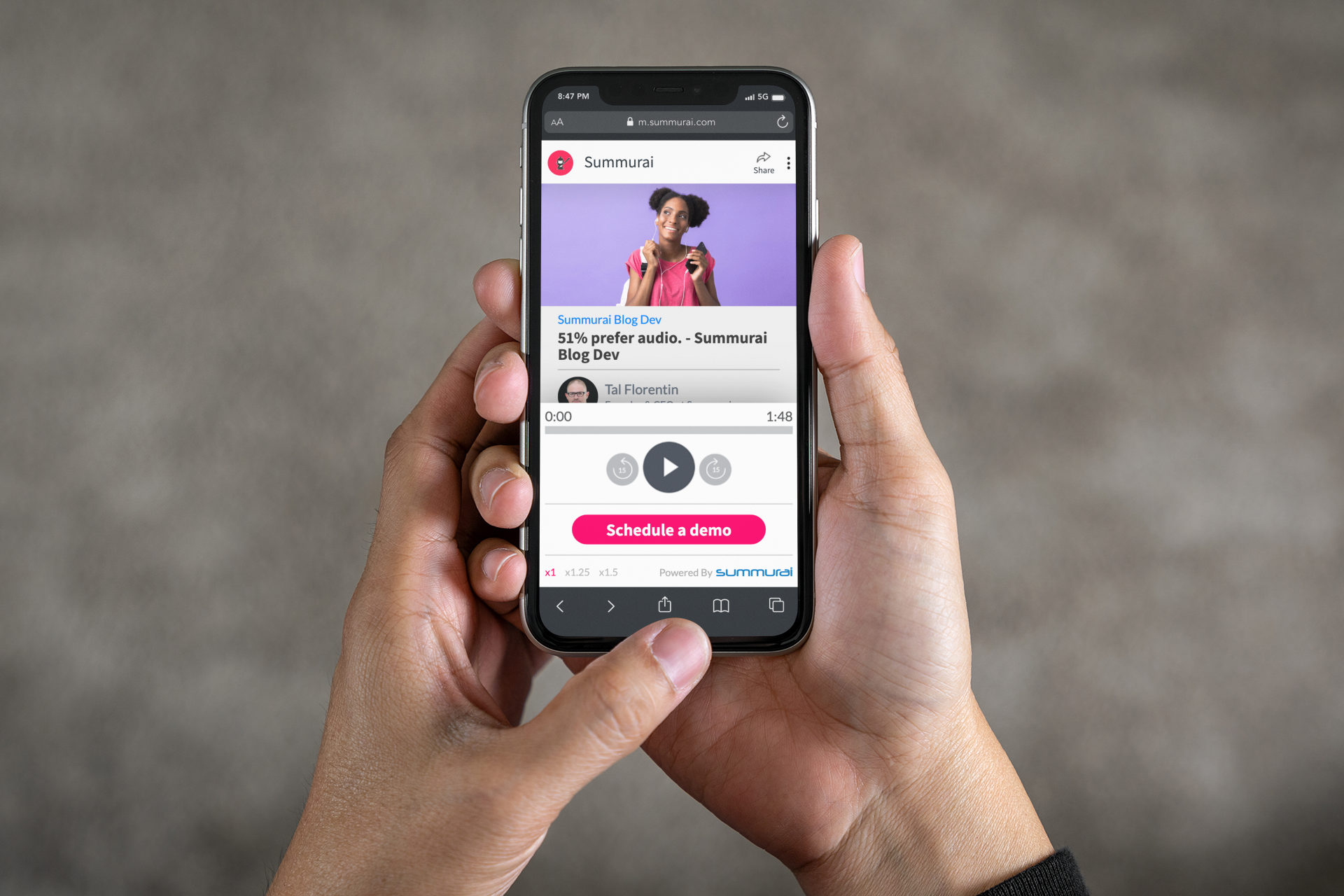
Ready to give it a try?
If this sounds like a plan, go ahead and create your first branded audio playlist, join on of our upcoming webinars or schedule a demo to learn more. We’d love to set up a live demo with your content to get you started:
- Schedule a call with us
- Don’t wait for us: Create your own branded audio playlist
P.S.
We just launched “Gated or not?” – a curated playlist of the top digital voices sharing their thoughts and insights around the eternal question of gating content or not.
We invite you to go ahead and listen: https://summur.ai/FPdr0

Tal Florentin
Add Playter to your blog
and turn visitors into leads.
Let your visitors listen to your content
Recent posts
MEET OUR STORYTELLERS
Get ready to create your storyteller
We're super excited to finally launch Summurai Storytellers.
Turn your blog posts to podcast with AI and Summur
How to turn your blog posts into audio and load them to the leading podcast platforms
Outstanding Audio Lead Magnet in 29 minutes with C
The challenge of creating significant content
Sushi Philosophy: Think Sushi and Embrace the Summ
When it comes to lead generation and content marketing, finding the perfect balance between engaging your audience and delivering valuable information
The Open Tab Trap is killing your funnel
How Content Consumption Habits Impact Your Marketing Funnel?
In the digital age, content
How to send voice messages on WhatsApp without ann
Why do we hate receiving WhatsApp voice messages, how do you make WhatsApp voice messages super effective and how you can use them in your marketing c
History is killing the future of audio experiences
I finally figured out what they consider audio a thing of the past.
